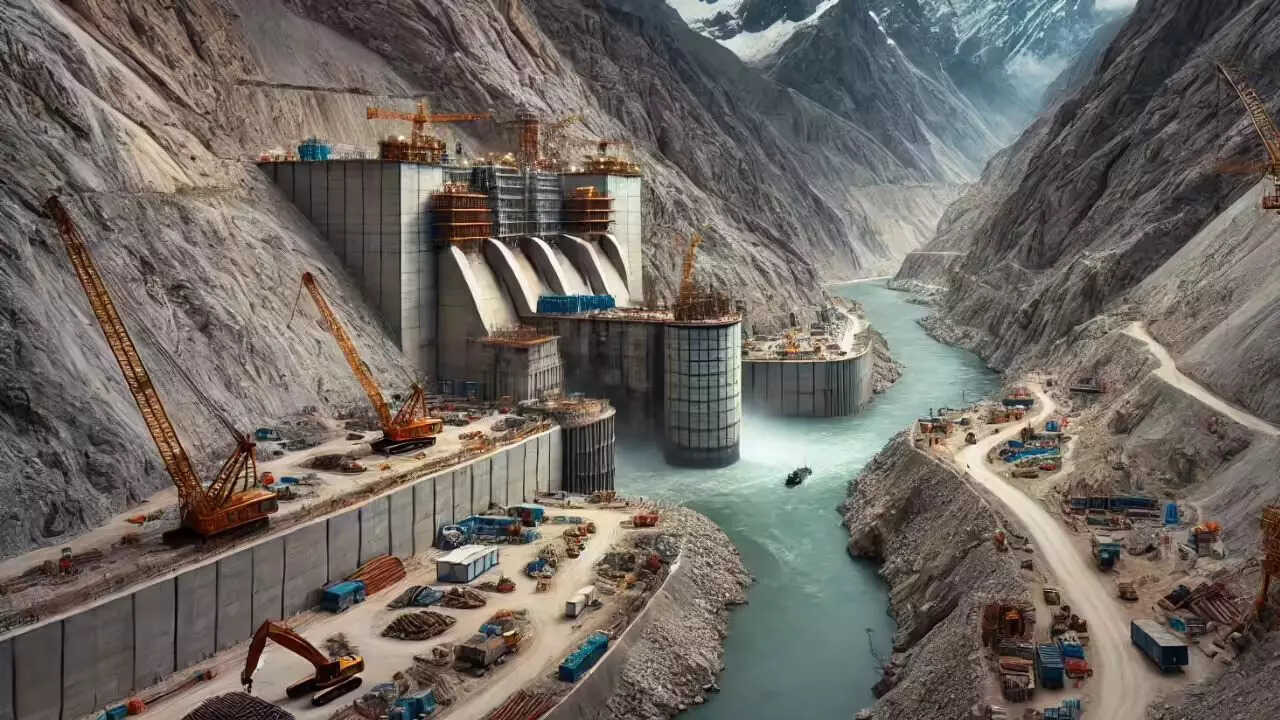Tensions escalate in the Eastern Himalayas as India and China pursue massive dam projects on the Brahmaputra River. Local communities in Arunachal Pradesh resist India’s Siang Upper Multipurpose Project, fearing environmental damage and displacement. The project is a strategic response to China’s dam construction upstream, raising concerns about water diversion and regional stability.
Riding the Dragon’s Tail: India’s Hydroelectric Gamble on the Siang River
The Brahmaputra, a lifeline for millions in India and Bangladesh, originates far away in the Tibetan Himalayas, where it’s known as the Yarlung Tsangpo. Its journey eastward, carving through breathtaking gorges before cascading into India as the Siang, is the stuff of legend. But these legends might soon face a new chapter, one etched in concrete and steel. China’s ambitious plans for a massive hydroelectric project on the Yarlung Tsangpo have spurred India to consider its own response: a series of dams on the Siang.
But will India’s counter-strategy be a masterstroke of strategic planning, or a risky gamble that could stir up a tempest of local resistance?
The Flow of Power: China’s Dam Building Spree
China’s intentions regarding the Yarlung Tsangpo have been a source of anxiety for downstream nations for years. The sheer scale of the proposed Chinese dam is what’s fueling the alarm. Details remain shrouded in secrecy, but murmurs of a potential dam larger than the Three Gorges Dam – already the world’s largest – paint a picture of a project with the potential to reshape the river’s flow and ecosystem.

The official line from Beijing emphasizes run-of-the-river projects, designed to minimize water storage and downstream impacts. However, the lack of transparency and independent verification leaves room for skepticism. Concerns center on the potential for water diversion, altering downstream flows, and impacting agriculture, livelihoods, and the delicate ecological balance of the Brahmaputra basin. The potential impact on India’s water security and disaster preparedness during peak monsoon season is considerable.
India’s Dam Dilemma: A Counter-Strategy or a Risky Proposition?
India’s response is multifaceted. Increased monitoring of the Siang’s water levels and flow patterns is a given, but the more concrete (literally) element involves developing a series of hydroelectric projects along the river’s course within Arunachal Pradesh. This approach, framed as a way to assert India’s riparian rights and ensure water security, comes with its own set of challenges.
The proposed dams aim to harness the Siang’s considerable energy potential, boosting India’s renewable energy capacity and reducing dependence on fossil fuels. From a purely technical standpoint, these projects offer a compelling solution to India’s growing energy demands. However, the devil, as always, is in the details.
One of the biggest hurdles is the potential for local resistance. Arunachal Pradesh, with its diverse tribal communities and sensitive ecosystems, has a history of opposing large-scale development projects. Concerns about displacement, environmental degradation, and the impact on traditional livelihoods are very real. Successfully navigating these concerns requires a delicate balancing act.
Winning Hearts and Minds: The Key to Sustainable Development
Transparency, community engagement, and fair compensation are crucial to gaining local support. Demonstrating a genuine commitment to minimizing environmental impact through rigorous environmental impact assessments and sustainable construction practices is also essential. Merely pushing through projects without addressing these concerns could backfire, leading to social unrest and project delays.
Perhaps India can borrow a page from some of the renewable energy projects underway in other Himalayan regions, projects designed with the community as a key stakeholder. A collaborative approach, that takes into account the needs of the people who live by the Siang, will likely generate more positive results in the long run. This includes comprehensive resettlement and rehabilitation plans, ensuring that affected communities benefit directly from the hydroelectric projects through employment opportunities, infrastructure development, and access to affordable energy. Furthermore, see this page discussing India’s dedication to renewable energy.
The Bigger Picture: A Call for Transboundary Cooperation
Ultimately, the Siang/Yarlung Tsangpo issue highlights the urgent need for greater transboundary cooperation between China and India. A mutually agreed-upon framework for data sharing, impact assessments, and joint management of the river’s resources is essential to prevent future conflicts and ensure sustainable development for all riparian nations. Both countries need to move beyond unilateral actions and embrace a collaborative approach that prioritizes the long-term health of the river and the well-being of the communities that depend on it. The future of the Brahmaputra, and the livelihoods of millions, hinges on finding common ground.
The development of hydroelectric power along the Siang River represents a pivotal moment for India, one that demands careful consideration of environmental, social, and geopolitical factors. Success will depend not just on engineering prowess, but on the ability to build trust, foster cooperation, and prioritize the well-being of the communities whose lives are intertwined with the river’s flow.







